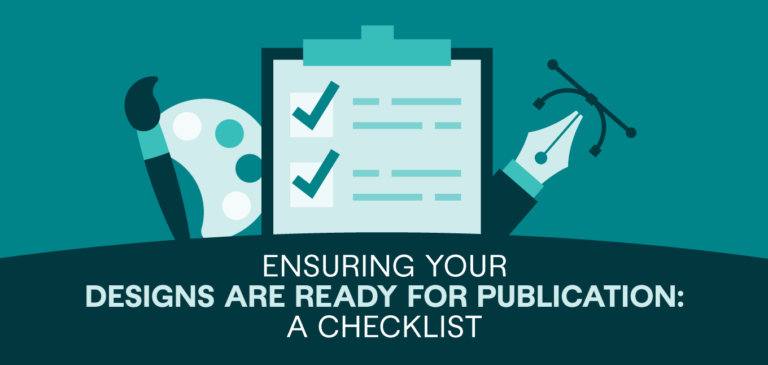Content marketing vs. inbound marketing vs. digital marketing: These three phrases are often used interchangeably.
However, they don’t exactly point to the same thing.
It’s true; these phrases share some things in common. They’re all used to grab user attention, build your brand, increase traffic, attract qualified leads, and ultimately convert casual users into paying customers.
However, they are individual concepts, each with its advantages and drawbacks. So what’s the difference between content marketing vs. inbound marketing vs. digital marketing?
Below, we explain how they work together to cover all your online marketing basics.
What is content marketing?
Content marketing is the strategic use of valuable information, conveyed through text, graphics, video, audio, or a combination of these, designed to build brand awareness and attract a prequalified audience of users interested in your products and services.
Longer text-based content tends to rank well in organic search results, but shorter, snack-sized content pieces also have uses. Unlike other marketing activities, content marketing focuses on two specific objectives: generating traffic and building brand authority.
For example, creating in-depth blog posts about relevant topics helps establish a brand’s authority as a credible information source. These posts can then be promoted on social media, pulling in traffic and generating qualified leads.
Here are some examples of content marketing at work:
- Blogging
- Syndicated content
- Video streaming
- Podcasts
- Infographics

Advantages of content marketing vs. inbound marketing
It’s worth mentioning that content marketing is considered a type of inbound marketing. After all, the goal is to lure in readers and potential customers by creating valuable content.
Here are the advantages that make content marketing different:
- Attract organic traffic: With the right strategies, blog posts can rank in search engine results and generate organic traffic.
- Low costs: Unlike other types of inbound marketing, content marketing includes strategies that don’t require a high overhead.
- Repurpose content for other marketing activities: Content marketing materials can be repurposed, including different promotion strategies.
Advantages of content marketing vs. digital marketing
Out of all three types of marketing, digital marketing has the broadest scope. Both content marketing and inbound marketing fall under the digital marketing umbrella.
- Scale as your brand grows: There’s no need to commit to subscription-based digital marketing platforms that will cause your brand to bleed money.
- Focus on long-term results: Content marketing leads to long-term, compounding results that can keep a brand healthy and relevant for years.
- Organically grow your reach: Certain types of digital marketing can be seen as intrusive while generating unsustainable results.

Creating a content marketing strategy in 2023
A successful content marketing strategy starts and ends with the target audience in mind. What are their goals and pain points? Where do they usually get their information?
Answering these questions will help you build a strategy tailored to their content consumption preferences. Then, follow the steps below to create your content marketing strategy.
Perform extensive keyword research
Targeting the right keywords will make your content more discoverable on search engines and other distribution channels. Some of the well-known keyword research tools include:
- Semrush Keyword Magic Tool
- Ahrefs Keyword Explorer
- Keywordtool.io
- AnswerThePublic
Observe the competition
To get significant results from content marketing, aim to outshine competitors in terms of content quality, length, and overall value. Be sure to look at the top competitors in your niche and analyze how they build, optimize, and promote their content.
Set content marketing goals
Do you want organic traffic, close more sales, or promote your online course? What metrics do you need to track, and which tools do you need to monitor them? Answering these questions will help you effectively set clearly-defined content marketing goals.
Think about content diversity
Different content marketing goals require various content formats. Some examples are short-form videos on TikTok, long-form content, and Instagram visuals. Choose which ones to use by defining your content marketing goals and learning the preferences of your target audience.
Research content ideas
Brands use several strategies to generate valuable content ideas. This includes competitor research, keyword research, trend watching, and surveys.
Common content marketing mistakes to avoid
- Creating content without performing keyword research
- Producing low-quality, unoriginal content
- Using only text-based content
- Not inserting links to spread traffic
- Publishing content about irrelevant topics

What is inbound marketing?
Inbound marketing comprises those methods and tactics that require the prospect’s permission before landing in their sphere of awareness. As a phrase, it’s used to distinguish permission-based marketing techniques from more advertising efforts.
Outbound marketing demands attention and is intrusive. Think of brochures hung from your doorknob or tucked under your windshield wipers, for example, or billboards that hug the side of the highway as you drive by. The user didn’t ask for any of those experiences. Instead, the brand pushed the message out to a broad audience.
By contrast, inbound marketing is inviting and non-intrusive. It puts the user in control by opting in to receive content from your brand.
Advantages of inbound marketing vs. content marketing
- More action-driven: Other inbound marketing strategies—from offering free eBooks to promoting gated white papers—are more direct in encouraging the audience to take action.
- Make traffic more profitable: Unlike generic content marketing, inbound marketing strategies put the audience on a more direct path to conversions.
Advantages of inbound marketing vs. digital marketing
- Building trust: Similar to content marketing, inbound marketing relies on trust-building strategies that make readers more receptive to a brand’s value propositions.
- Generate more passive conversions: Broad digital marketing campaigns may lead to more traffic, but inbound marketing attracts more qualified visitors who are more likely to convert.

Creating an inbound marketing strategy in 2023
Beyond content marketing, brands ought to explore other inbound marketing strategies such as:
Build content offers that sell themselves
Inbound internet marketing depends on content assets and offers that magnetize an audience without hard selling. This includes inbound media like eBooks, free online courses, and, of course — top-quality blog posts.
Create buyer personas
Gathering insights about your target audience and compiling them into buyer personas can help inbound marketing campaigns. For one, buyer personas help brands ideate offers that will pique their target audience’s interest. And for another, they can help content creators streamline and fine-tune their processes.
Hire specialists for content creation
It’s important for brands not to skimp on content for inbound marketing. Fortunately, they can easily outsource the talent they need from content agencies and freelance marketplaces.
User conversion rate optimization
Inbound marketing only works with effective conversion rate optimization. Review conversion elements, like CTA buttons and opt-in forms, are eye-catching. Also, you should also use analytics and run A/B tests to help improve conversions over time.
Common inbound marketing mistakes to avoid
- Promoting inbound marketing content that contains generic information
- Creating buyer personas without conducting actual audience research
- Not implementing regular content promotion strategies
- Not constantly tracking and improving CRO

What is digital marketing?
Digital marketing refers to tactics of promotional marketing and advertising that use purely digital channels. Certain aspects of content marketing also qualify as digital marketing.
For example, performing SEO on a written blog post or creating an explainer video could be categorized as either content marketing or digital marketing, or both.
Some examples of digital marketing are:
- Search engine marketing
- Paid advertising
- Social media marketing
- Email marketing
- Influencer marketing
Advantages of digital marketing vs. content marketing
- Get results faster: Several branches of digital marketing, like influencer marketing and paid advertising, get faster results than content marketing.
- More ways to reach your audience: Digital marketing unlocks multiple ways to actively connect with your target audience, like paid advertising and guest blogging.
- Stay in touch with your audience: Retargeted ads and newsletters allow brands to stay connected with their audience and build loyalty.
Advantages of digital marketing vs. inbound marketing
- Better targeting options: Digital marketing tools make it easier to launch hyper-targeted campaigns than inbound marketing programs.
- Use the power of inbound and outbound strategies: Unlike inbound marketing, digital marketing includes outbound strategies that can push your brand right in front of your target audience.

Creating a digital marketing strategy in 2023
Below are the steps that will help you create an all-around digital marketing strategy in 2023:
Plan for inbound marketing
Don’t forget that inbound marketing is a crucial aspect of digital marketing. That said, exhaust the steps included in planning an inbound marketing strategy, like creating buyer personas and CRO.
Identify KPIs
Set Key Performance Indicators or KPIs based on your digital marketing goals and target platforms. For example, social media marketing should cover audience insights like follower count and user engagement. Email marketing, on the other hand, could include the opt-in rate and unsubscribe rate.
Understand audience intent
To make the most out of your digital marketing efforts, you need to provide your audience with content that matches their intent.
Present informative content to users who only want to do research. Hot buyers who need quick solutions, on the other hand, are ready for your sales-heavy marketing materials.
Look at the small and big pictures
Digital marketing focuses on both long-term goals and quick wins.
Compartmentalize objectives for individual campaigns like advertising and influencer marketing, but be sure they align with your brand’s long-term goals.
Common digital marketing mistakes to avoid
- Not combining outbound and inbound marketing strategies
- Forgetting to align marketing goals with business goals
- Ignoring user intent
- Failing to utilize and optimize existing channels and content assets

Frequently Asked Questions
What is the difference between inbound marketing and digital marketing?
Content marketing is an inbound marketing strategy that focuses on generating traffic and building brand authority. Digital marketing, however, is a broader area that goes beyond content marketing and involves outbound strategies like advertising.
What is inbound digital marketing?
Inbound marketing banks on helping a target audience discover and engage with brands on their own accord. It’s very different from outbound marketing, which can be intrusive and disruptive to users.
Is inbound marketing the same as content marketing?
Inbound marketing encompasses all activities that attract potential leads and customers. Content marketing is a more specific type of inbound marketing that most brands consider the most important.
Content marketing vs. inbound marketing vs. digital marketing
Now that we have a better understanding of how these three strategies differ, and what they share in common, we can begin to sketch out how they work together in support of a single brand.
For example, let’s use a hypothetical B2C company that sells skincare to women with sensitive skin.
The company’s goals include raising brand awareness and ultimately increasing sales of its core three-product starter kit.
The company has embraced an inbound strategy to accomplish these goals, including both content marketing and other forms of paid and organic digital marketing. In addition, it’s created a primary marketing funnel that includes a free two-week trial of its products.
How can our hypothetical business put all the pieces together in a cogent, practical way that moves it closer to its goals?
- Start with content. An experienced content marketer is hired by the company to write a useful how-to article of more than 2,000 words about 11 things that aggravate sensitive skin. When the piece is polished and proofed, the company publishes it on the brand blog.
- Promote the content. The brand’s marketing team works to promote the piece using social media and targeting skincare influencers through outreach emails. The piece begins to attract attention.
- Refine the article. As the article gains traction, the marketing team makes sure the piece is refined and perfected, using the conversations it’s monitored on social media (especially on influencers’ accounts) to augment and update the piece accordingly. It also ensures the piece is optimized for search using primary and secondary keywords identified through keyword research and social media listening.
- Boost the article. Using paid digital marketing tactics, the company boosts the article’s reach through paid social media advertisements (particularly on Twitter and Instagram, where it’s seen the most active engagement), boosted posts through its Facebook page, and paid search ads (search engine marketing or SEM).
- Capture leads. When users arrive at the newly optimized page, as they’re preparing to exit out, a pop-up invites them to join the company’s email list to receive a free ebook that discusses how women can respond to and treat those 11 triggers for sensitive skin. The subscribers are added to the email list and given a download link for the ebook.
- Start delivering an email sequence. All new subscribers are emailed a sequence of messages that build interest in the company’s products, culminating in an offer for a free trial of the care regimen. Those samples are delivered to the prospects through a shipping company or the USPS. Two weeks later, the recipients of the trial receive an email message with a promo code offering a discount on the full-size products.
This sequence helps fill the marketing funnel and move prospects along the path toward a purchase.
It uses an inbound methodology and incorporates content marketing that’s then promoted and built upon by digital marketing strategies.
While it’s a simplified path, you can borrow it as a template. Build on it by expanding the tactics to reach your brand’s specific audience.

Choose your marketing strategy
Understanding content marketing vs. inbound marketing vs. digital marketing may sound overwhelming, but now that we’ve gone over the differences, so you can work on combining them into a supercharged strategy.
ClearVoice can supply you with fully-managed content teams experienced in all three types of marketing. Chat with a content specialist, and let us help you build a comprehensive marketing strategy today.



